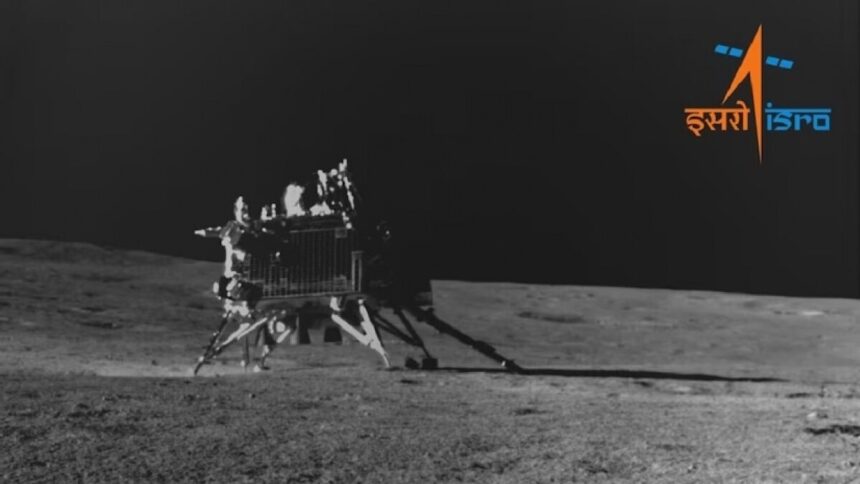Chandrayaan-3’s Vikram lander is “happily sleeping on the Moon” after doing its “job very well”, Indian Space Research Organisation (ISRO) chief S Somanath said on Monday. He said the space agency will continue making efforts to establish contact with the lander. “No signals have been received from them. Efforts to establish contact will continue,” Somnath said. “Maybe if it wishes to wake up, let it wake up. Until then, we will wait.”
Also read: ‘How times have changed’: ISRO chief S Somnath reveals how Chandrayaan-3 impressed NASA
Chandrayaan-3, which landed on the lunar surface on August 23, was designed to work for one lunar day, which is equivalent to 14 Earth days. Moon’s southern region experiences extreme cold in the night when the temperatures can plunge to -280 degrees Celsius. For Chandrayaan-3, which was solar-powered, the challenge was to withstand the night and function again.
On September 2, the space agency said that the rover had completed its assignments and it was now safely parked and set into sleep mode. It said the battery was fully charged and the solar panel was oriented to receive the light at the next sunrise expected on September 22. “The receiver is kept on. Hoping for a successful awakening for another set of assignments! Else, it will forever stay there as India’s lunar ambassador.”
Also read: IITians not joining ISRO, 60% students walked out of a recruitment drive after seeing pay structure: S Somanath
Once the Sun came up again on the Moon, the ISRO tried to establish connections with Chandrayaan-3 but did not receive any signal.
Today, the ISRO chief said that the lander Vikram had done its job very well during the lunar day.
After the historic landing, lander Vikram and rover Pragyan performed different experiments on the Moon, including detecting the presence of sulphur and recording relative temperature.
On Monday, Somanath also gave an update on ISRO’s maiden mission – Aditya L1 – to study the Sun, saying that the spacecraft is “very healthy” and remains on course during its 110-day-long journey to Lagrange Point L1.
“It is a long journey. It is almost 110 days of journey, and it has covered some distance now. We corrected a little bit of its trajectory because early correction is important to reach the L1 point. After tracking, we find it is going in the right direction towards the L1 point,” he said. Aditya L1 is expected to reach the destination by the “middle of January.”
The ISRO chief also shared updates on the Gaganyaan programme, the country’s ambitious space mission aimed at sending humans into space. Somanath said the space agency will conduct three more test vehicle missions under the ambitious Gaganyaan programme after the maiden TV-D1 test flight, which is scheduled on October 21.
The Gaganyaan project envisages a demonstration of human spaceflight capability by launching a human crew to an orbit of 400 km and bringing them safely back to Earth by landing in Indian sea waters. The test vehicle development flight (TV-D1) will be conducted at the Satish Dhawan Space Centre in Sriharikota in Andhra Pradesh to test the crew module that is scheduled to house Indian astronauts during human spaceflight late next year.
(With inputs from PTI)








